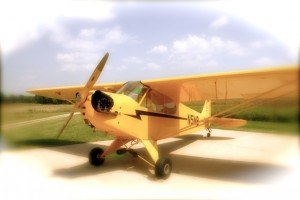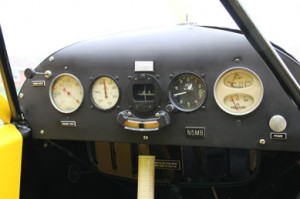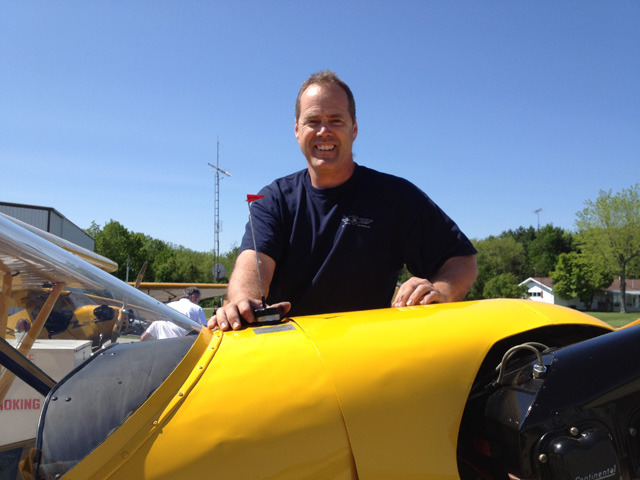Airplane
 Old But Good
Old But Good
Joe Murray partnered with his brother, Mike Murray, and airfield owner Tom Mindzak to purchase the restored Piper Cub aircraft in 2009.
He admits that compared to more modern airplanes, the J3 flies so slowly that cars on the highways below frequently overtake him in flight—so for this record attempt, he thinks people will be better off clocking his speed, “with a calendar.”
The flight, approximately eight days in the air, will likely take a few weeks to complete, factoring in anticipated delays for weather. Murray and Siwik can’t fly at night because the antique Pipers don’t have lights, nor for that matter, an electrical system. The pilots spin the wooden propellers by hand to start each airplane’s 65-hp engine. Murray says he loves the old airplane like a member of his family, and is realistic about its limitations. Though the J3 is endearing to any pilot who learned to fly in the last century, he says, “it is still a 66-year-old two-seat trainer that is cramped, drafty and lacking in the creature comforts of a more modern cross-country airplane.”
Murray’s Piper Cub was built in Lock Haven, Pennsylvania in 1946 and rolled out of the factory on October 31st—Halloween. He says he doesn’t think the airplane is haunted. “I prefer to think it was delivered on All Saints Day,” he says, “particularly when I am flying in it.” Siwik’s J3 is nearly a carbon copy, built in the same factory. The only visible difference being the large, original registration numbers painted on the wings of Siwik’s Cub.
They Don’t Build Them Like They Used To
The aircraft are well-maintained and are equipped as all original J3s are, with only the most basic flight instruments: altimeter; tachometer; airspeed indicator; and a combined oil-pressure/temperature gauge to monitor the health of the engine. The fuel gauge is a simple stick that pokes through a hole in the airplane’s gas cap. A magnetic compass floats in a small spherical glass container of kerosene and is located in the center of the sparse instrument panel.
 With little room in the small cockpit for amenities, Murray straps what he can into a rucksack on the front seat. For safety, he carries a battery-powered radio transceiver to talk to air traffic controllers and to other pilots when necessary. He will also use it to obtain weather briefings and updates while enroute. He keeps a GPS in the airplane for emergencies, but will rely on a paper aeronautical chart, the magnetic compass and a wristwatch for primary navigation.
With little room in the small cockpit for amenities, Murray straps what he can into a rucksack on the front seat. For safety, he carries a battery-powered radio transceiver to talk to air traffic controllers and to other pilots when necessary. He will also use it to obtain weather briefings and updates while enroute. He keeps a GPS in the airplane for emergencies, but will rely on a paper aeronautical chart, the magnetic compass and a wristwatch for primary navigation.
Because of weight and balance limitations, each pilot must fly the airplane from the back seat. Flying with both the flip-up window and drop-down door open on warm days, Murray says, “the view is much better from the back,” and, he says, it allows him to “stretch his legs out a little.” Even with the door and window closed, Murray says the vintage airplane still provides him with “plenty of fresh air.”
Want to know what it is like to fly a J3? See original performance data here. Check out page two of Budd Davisson’s Comparing the Classics and watch video, The Classic Cub.
